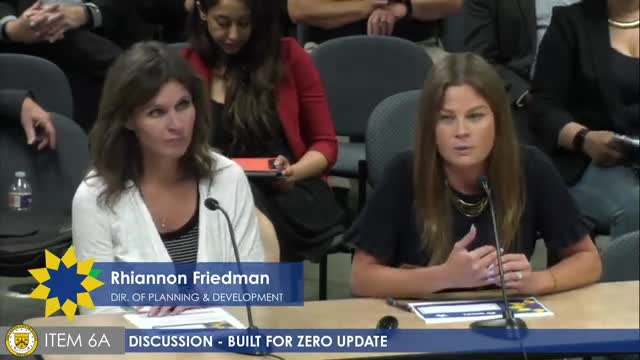Kansas launches ambitious plan to end homelessness
August 14, 2024 | Topeka City, Shawnee County, Kansas
This article was created by AI summarizing key points discussed. AI makes mistakes, so for full details and context, please refer to the video of the full meeting. Please report any errors so we can fix them. Report an error »

In a recent government meeting, officials discussed the transition from the existing Emergency Assistance Services (EAS) to a new framework known as \"Built for Zero,\" aimed at effectively addressing homelessness in the community. This initiative, introduced by the Kansas Department for Aging and Disability Services (KDADS), emphasizes a data-driven approach to end homelessness rather than merely managing it.
Key components of the Built for Zero model include the establishment of a single, accountable team, a shared measurable aim focused on reducing homelessness, real-time data collection, and strategic resource allocation. The model aims to create a comprehensive system that tracks individuals experiencing homelessness, ensuring that all agencies involved are aligned and accountable.
Carrie, a representative from the initiative, highlighted the importance of quality data, which will be collected in real-time to better understand the needs of the homeless population. This data will inform outreach efforts and resource distribution, allowing for a more strategic use of limited resources.
The meeting also addressed the results of a recent summer point-in-time count, which revealed a slight increase in homelessness compared to the winter count. Officials noted the necessity of understanding the demographics and circumstances of those unsheltered, emphasizing the need for targeted interventions.
Council members expressed their support for the Built for Zero initiative, recognizing the challenges of homelessness and the importance of community involvement. They discussed the need for a multi-sector coalition to ensure that all stakeholders are engaged in the process and that the recommendations from the Homeless Innovation Group are integrated into the framework.
The timeline for implementing Built for Zero includes a kickoff meeting that took place on July 1, with plans for a six-month action cycle beginning in October. Officials stressed the importance of patience and collaboration as the community works towards reducing homelessness through this structured approach.
Overall, the meeting underscored a commitment to a comprehensive strategy that not only addresses immediate needs but also seeks to create sustainable solutions for the homeless population in the community.
Key components of the Built for Zero model include the establishment of a single, accountable team, a shared measurable aim focused on reducing homelessness, real-time data collection, and strategic resource allocation. The model aims to create a comprehensive system that tracks individuals experiencing homelessness, ensuring that all agencies involved are aligned and accountable.
Carrie, a representative from the initiative, highlighted the importance of quality data, which will be collected in real-time to better understand the needs of the homeless population. This data will inform outreach efforts and resource distribution, allowing for a more strategic use of limited resources.
The meeting also addressed the results of a recent summer point-in-time count, which revealed a slight increase in homelessness compared to the winter count. Officials noted the necessity of understanding the demographics and circumstances of those unsheltered, emphasizing the need for targeted interventions.
Council members expressed their support for the Built for Zero initiative, recognizing the challenges of homelessness and the importance of community involvement. They discussed the need for a multi-sector coalition to ensure that all stakeholders are engaged in the process and that the recommendations from the Homeless Innovation Group are integrated into the framework.
The timeline for implementing Built for Zero includes a kickoff meeting that took place on July 1, with plans for a six-month action cycle beginning in October. Officials stressed the importance of patience and collaboration as the community works towards reducing homelessness through this structured approach.
Overall, the meeting underscored a commitment to a comprehensive strategy that not only addresses immediate needs but also seeks to create sustainable solutions for the homeless population in the community.
View full meeting
This article is based on a recent meeting—watch the full video and explore the complete transcript for deeper insights into the discussion.
View full meeting
